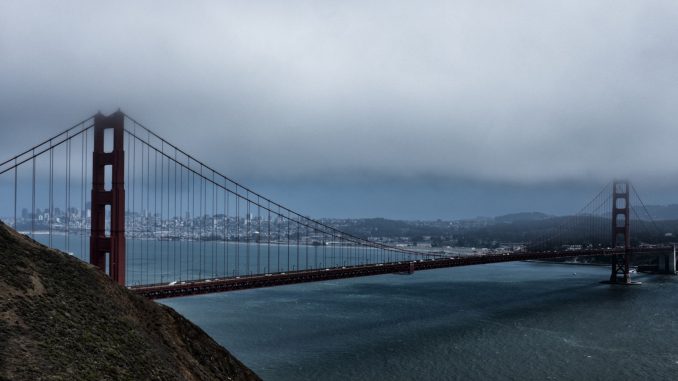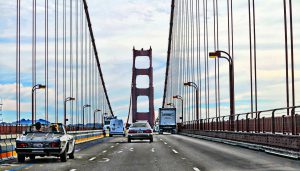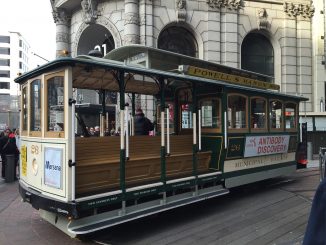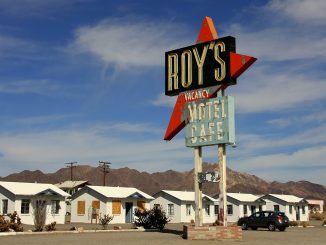
When the average American is asked about San Francisco, California there are a limited number of things that immediately come to mind. The first of those is almost always the Golden Gate Bridge. The Golden Gate Bridge is a suspension bridge spanning the one mile wide Golden Strait between the northern tip of San Francisco and Marin Bounty. The bridge is a continuation of U.S. Route 101 (the Central Coast Freeway) and California State Route 1. One of the most recognizable bridges in the world, as well as one of the most beautiful, the Golden Gate Bridge was declared one of the Wonders of the Modern World by the American Society of Civil Engineers. When the bridge opened in 1937 it was the longest suspension bridge in the world, a distinction it held until 1964.

Before the construction of the bridge, there was not a direct or practical route across the bay at this area. Most of the traffic that needed to cross at this point was done via ferry service, and the ferries operated from the 1820s till just after the opening of the bridge. There were regularly scheduled ferry services as early as the 1840s and many of the people entering the San Francisco bay area in search of gold helped launch the Sausalito Land and Ferry Company in 1867. Crossing the gap by ferry took just a little less than a half hour and at the time was rather expensive ($1.00 per vehicle).
The need for a bridge at this location was severe because of rapid population growth in the city. It was determined that something had to be accomplished quickly in order to deal with the resulting increased demands of the community. Experts however thought that the weather, including the high wind, strong currents, and blinding fog would make it impossible to complete.
The official proposal for the bridge was set forward in the San Francisco Bulletin in 1916 by an engineering student James Wilkins. At the time it was estimated that the total cost of the bridge would be $100 million. This cost was nearly impossible to raise at the time and a call was made out to engineers and designers to come up with a more cost efficient way to literally bridge the mile-long gap. Joseph Strauss, an engineer was determined to get the job and came up with almost 400 drawings and set his price at $17 million. While there were many people involved in the construction and final design of the bridge, Strauss was adamant that it was he alone that was responsible for its completion.
The now famous International Orange color of the bridge was originally used as a sealant to protect the bridge from the weather. It was the hope of the United States Navy that the bridge would be painted black and yellow to ensure that it was highly visible to passing ships.
Golden Gate Bridge Facts
- It is called the Golden Gate Bridge because it spans over the Golden Gate Strait.
- Because the war department owned the land on both sides of the strait, it had to authorize construction of the bridge.
- The Navy wanted the bridge to be painted with black and yellow stripes to be better seen by boats. The Army Air Corps wanted red and white stripes to make it more easily seen from the air.
- The Golden Gate Bridge is the top suicide location in the world.
- An innovative $130,000 safety net suspended under the bridge deck during construction saved the lives of 19 workers that otherwise would have fallen to their deaths.
- The bridge is 8,981 feet long (1.7 miles) and contains about 88,000 tons of steel.
- The total weight of the bridge is 887,000 tons.
- There are approximately 80,000 miles of wire inside each of the two steel cables.
- The towers are 726 feet above the water and 500 feet above street level. They weigh 44,000 tons each and are 4,200 feet apart from each other.
- The color of the Golden Gate Bridge is officially called “GGB International Orange”.


